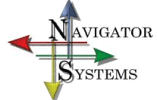Top Ten Wireless Networking Don'ts
1. Never mount an omni adjacent to anything metal
…including mounting poles – stand the aerial at least one foot away from the pole.
2. Don't buy an access point/card without a removable aerial or aerial connector
At some point you are going to find you need a little more range. The PC might be by the wall against a radiator or since the card is in the back of the pc the signal might have to pass through the case before it reaches the access point, so you have to move the pc, but with an aerial connector you can add a small external aerial that relocates the aerial to a better place – trust me, I've seen offices where the CD drive is facing the wall so people can get a signal.
3. Never forget to turn on encryption
As well as stealing the internet connection, people have also been known to reset the access points to completely lock the owner out. For the most part, a combination of MAC filtering (only allow connections from known pieces of hardware) and 128 bit (or more) WEP (if the product supports weak IV filtering) will suffice. However a determined hacker can get through all these security measures. Luckily there aren't that many good hackers around. If you have more recent equipment that supports WPA then that offers the best security. You may find upgrades are available on the manufacturers web sites to add WPA to existing units.
4. Never use an Omni when you don't need it
The best way of minimizing interference and other problems is to carefully design your system to only provide coverage to the area you want to cover. If you are using a link from the lighting desk to the stage, use yagi aerials and use a low power level.
If you need to cover an auditorium, don't put an omni up in the middle; work from one edge and use a patch aerial tilted to only cover the required area. If there is a lobby, make sure you place the aerial with the lobby behind the directional aerial so that you cut out people using their laptops.
5. Don't adjust the link for the best signal strength then assume it's OK
Run a link test utility (normally supplied with a card) and look for any dropped packets or retransmissions. Some links even with good signal strengths are in reality useless because of interference or multipath reflections.
6. Don't choose the aerial position without testing the signal strengths around it
It is very easy to look and see the 'obvious' place for the aerial. However two feet to the side of it you may find the signal is much better because there are less reflections which cancel out the signal or confuse the receiver. Plug the aerial into a card in a laptop, run a link quality test and move the aerial around until you find the best position.
7. Never place the aerials close to anywhere bluetooth equipment is likely to be in use
It is very easy to put the aerial by the sound or lighting desk and forget that a lot of phones and hand held organisers have bluetooth which will interfere with 802.11b equipment.
8. Don't believe everything you read
Especially not manufacturer's claims for their equipment. Equally the information on this site can only be used as guidance, it only provides starting points, but every installation is different so you may find that the best solution is one that goes against these tips.
9. Don't make your own cables on site
Unless you have a van with a workbench and your own microwave test equipment, it really isn't worth it. RF connectors need patience and practice to make work properly. If you can, always buy made up and pre-tested leads. A badly put on connector will ruin the efforts you have made to get a good link and will inevitably fail.
10. Don't forget to check before you connect two aerial to the access point
Some access points have 'diversity' aerials – i.e. two aerials or aerial connectors. The diversity system works on both aerials being able to receive the signal, but the signal from the strongest is used. If you fit two aerials, one pointing in each direction to provide wider coverage, the system will fail. If you do need to connect two directional aerials, use a splitter box run off one output.
Eleven for the price of ten!
11. Never connect cheap patch antennas via a splitter box
If you need 360 degree coverage over an area, the best alternatives are to use 3 aerials with 120 degree coverage back to back. If you have the channels then each aerial should be on its own non overlapping channel. If this is not possible then use a three way splitter BUT make sure that the aerials are designed to do this. Most inexpensive <£300 patch aerials have a radiation pattern that means the three signals will interfere with each other and leave huge blackspots in the coverage. Good quality aerials designed to do this have very clean outputs which ensure all the energy goes out the front and very little comes out the side to minimise the interference between the aerials. Best of all space the three antenna as far apart as possible.

